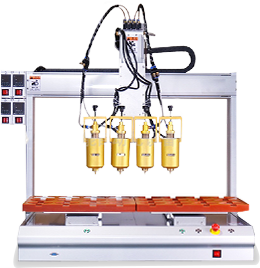

This frame precision hardware part, as the core basic accessories of electronic equipment, is made of high-quality stainless steel/aluminum alloy and is made through multiple processes such as precision CNC processing, milling, and grinding. The appearance presents a regular rectangular structure, with smooth corners and no burrs. The surface is anodized, galvanized, and other treatments, and has both corrosion and wear resistance. It is suitable for electronic systems such as industrial control equipment, communication cabinets, and smart terminals. It can be used as a functional module installation carrier to accurately accommodate circuit boards, display components, etc. It seamlessly connects with the main body of the equipment through preset installation holes, provides stable support and physical protection for electronic components, and ensures the orderly layout of the internal structure of the equipment. It is a key precision component to improve the integration and stability of electronic equipment.
Using aviation-grade aluminum alloy (6061-T6) or 304 stainless steel, it has high strength and good toughness, and the dimensional tolerance is controlled within ±0.01mm, and the shape and position tolerance is ≤0.02mm, which is suitable for the high-precision installation requirements of electronic components and ensures the stability of equipment operation.
Performance parameters | Aluminum alloy | Stainless steel model |
Material | 6061 - T6 | 304 stainless steel |
Dimensional tolerance | ±0.01mm | ±0.01mm |
Surface hardness (HV) | ≥120 | ≥200 |
Corrosion resistance level | Salt spray test 480h no rust | Salt spray test 720h no rust |
(II) Reasonable structural design
The integrated frame structure integrates functional areas such as mounting holes and positioning slots. No additional adapters are required, and the electronic module can be directly fixed, reducing assembly links and improving equipment production efficiency. Edge chamfering can avoid scratching cables and operators, ensuring safety in use.
(III) Strong compatibility
The standardized design is suitable for the installation of multi-brand and multi-model electronic components, supports customized openings and slots, and meets the functional expansion requirements of different devices, such as industrial computers that can expand IO module installation, and communication equipment that can integrate heat dissipation modules to help electronic equipment upgrade flexibly.
III. Product details
During the R&D stage, the integration requirements of electronic equipment are deeply connected, and SolidWorks modeling is used to simulate the force and installation adaptability of the frame to optimize the structural strength and lightweight design. During production, a five-axis linkage CNC machining center is used to achieve multi-faceted machining with one clamping to ensure accuracy consistency. Surface treatment is based on the material and application scenario. Aluminum alloy parts are anodized to form a wear-resistant and anti-corrosion layer, and stainless steel parts are passivated to enhance protection.
Before leaving the factory, the dimensional accuracy is fully inspected by a three-coordinate measuring machine, and the installation compatibility and structural stability are tested by simulating equipment assembly. For example, for the circuit board installation frame, it is verified that there is no looseness and good contact after 5,000 plug-ins and unplugs. From the compact layout of industrial automation production lines to the stable integration of communication base station equipment, the precision hardware parts of this frame have become the "skeleton-level" support components of electronic equipment with high precision, strong adaptability and excellent protection, allowing electronic systems to operate efficiently in compact spaces and helping the industry create more reliable and smarter terminal products.
 Headquarters tel.
Headquarters tel. E-mail.
E-mail.